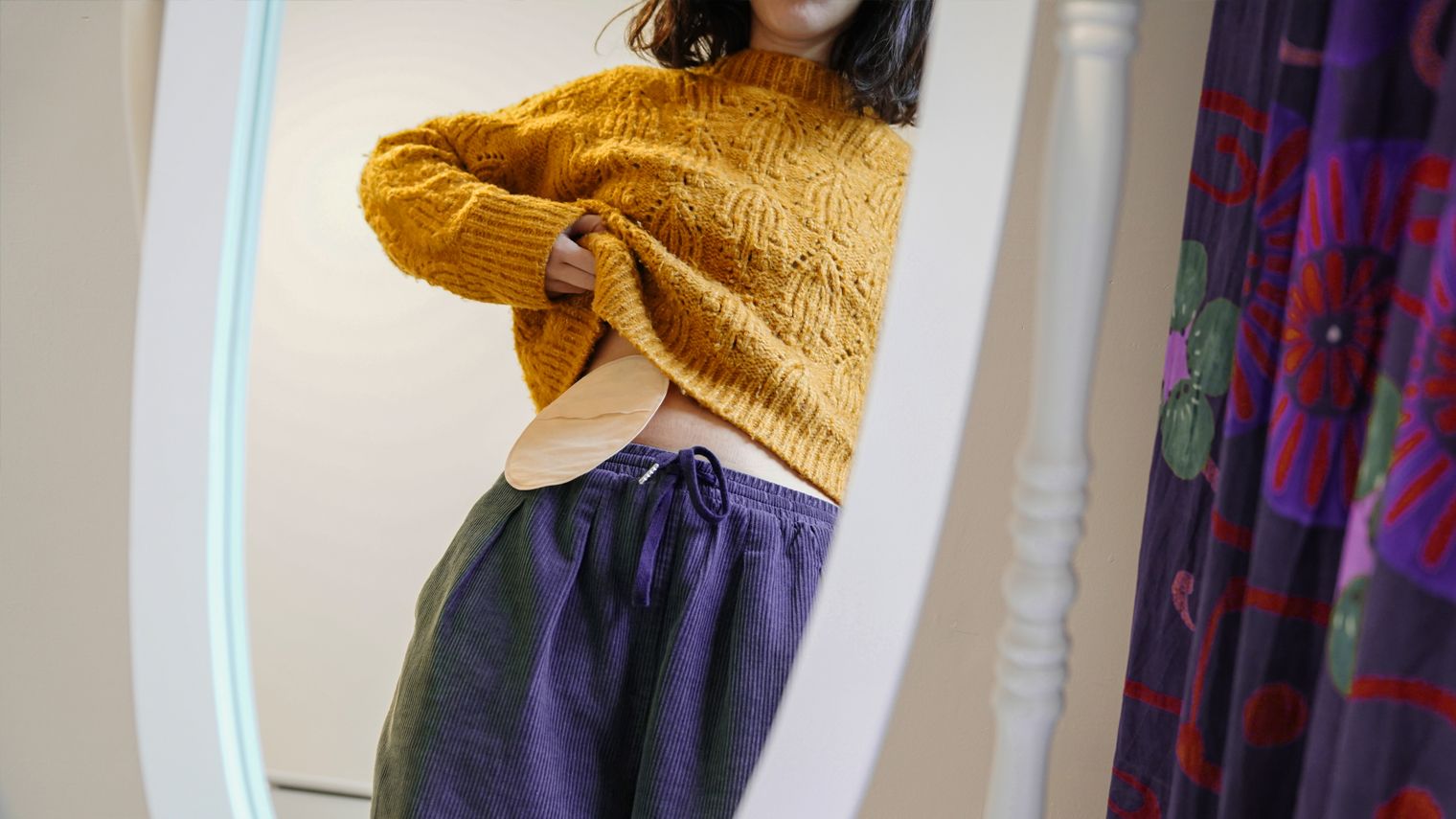What You Don’t See in a Life with IBD
February 02, 2024
Content created for the Bezzy community and sponsored by our partners. Learn More

Photography by Sheila Alonso/Getty Images
Some things, like weight loss and piles of bills, are obvious. But there’s an invisible aspect to many parts of life with Crohn’s disease or ulcerative colitis.
The thing about inflammatory bowel disease (IBD) is that it’s an invisible illness. Some things are easy to hide … but others? Not so much. Here are four things that you see (and don’t see!) when it comes to IBD.


Ostomy bags
Here’s what you see
If a person with IBD requires surgery, doctors may create a stoma from the end of the intestine inside the body to the outside surface of the abdomen. An external bag, called an ostomy bag, can be attached there to collect waste when it can no longer pass through your body.
People with ostomy bags can live completely healthy lives and eat normally. Some people choose to wear their ostomy bags in a visible and stylish manner.
Here’s what you don’t see
Ostomy bags can be easily hidden with clothes if people choose to be more discreet. I’ve met multiple people who have ostomy bags, and I had no clue until they told me.
Hospital bills and insurance claims
Here’s what you see
I’ve received countless (and I mean countless) explanations of benefits (EOBs) from insurance companies and bills from hospitals.
Living a lifetime with Crohn’s or UC adds up. A 2016 study found that the average lifetime total cost of managing Crohn’s (counting inpatient and outpatient medical care and pharmaceutical costs) amounts to over $600,000 with health insurance.
Here’s what you don’t see
I’ve learned to jump through the hoops to understand the EOBs and what I owe to whom. But there are a lot of hoops. And it takes a lot of time.
I don’t even want to know how many hours I’ve spent on the phone with hospital billing departments and the health insurance customer service. The music that plays while waiting for representatives haunts me.
Symptoms
Here’s what you see
IBD symptoms can vary by person. Some symptoms, however, are fairly easy to spot. An easy one is weight loss.
Pre-Crohn’s diagnosis, I lost nearly 40 pounds. My body wasn’t absorbing any nutrients, and I was never hungry because I was always in pain. I had a mouthful of sores. I had constant diarrhea. The telltale sign that something was wrong? Blood in my stool.
Here’s what you don’t see
The images from my first colonoscopy were not pretty. My colon was wrecked with disease, inflammation, scarring, and ulcers. IBD is not like psoriasis or paralysis, which have visible indicators that something is amiss. With IBD, most of the damage is occurring within the body.
I was 12 when I was diagnosed, and I felt completely unconnected to my body. I was scared to go out in public because I feared I would poop my pants (which happened multiple times). I was embarrassed any time I farted because someone would call attention to it.
Multiple people congratulated me on my weight loss, which made me feel insecure about the body I had beforehand. Others not-so-kindly asked if I had an eating disorder, which made me uncomfortable eating food around other people. So, all to say, Crohn’s did a lot more damage than just to my gut.
Medications
Here’s what you see
There are many ways to manage IBD. Some people may take a holistic approach and manage their Crohn’s or ulcerative colitis through their diet or natural remedies. I take an intravenous drug, Inflectra, every 8 weeks.
Other medications include pills, injections, or steroids to help reduce inflammation. Each person will respond differently to each kind of treatment.
Here’s what you don’t see
I’ve had Crohn’s for over half my life — which means I’ve spent a lot of time in hospitals.
I’ve shared many laughs, tears, and great conversations with the nurses who have helped keep me healthy over the years. I’ve loved welcoming them into a window of my life, and I like to think that they’ve enjoyed getting to know me while I’m in the infusion chair.
The takeaway
Having IBD has altered my life — I think anyone with a chronic illness can empathize with the changes that we must navigate on a journey toward health.
I’m more in tune with my body, more self-aware, more empathic. I practice gratitude for what my body does for me and release feelings of bitterness for what it cannot.
It’s not a tangible thing, the relationship I have with myself and with my Crohn’s. But it is a fundamental part of who I am, and it’s not something I could ever resent.
Medically reviewed on February 02, 2024


Like the story? React, bookmark, or share below:
Have thoughts or suggestions about this article? Email us at article-feedback@bezzy.com.
About the author